Allied Telesis AT-AR750S-DP Handleiding
Allied Telesis
Router
AT-AR750S-DP
Bekijk gratis de handleiding van Allied Telesis AT-AR750S-DP (5 pagina’s), behorend tot de categorie Router. Deze gids werd als nuttig beoordeeld door 83 mensen en kreeg gemiddeld 4.9 sterren uit 42 reviews. Heb je een vraag over Allied Telesis AT-AR750S-DP of wil je andere gebruikers van dit product iets vragen? Stel een vraag
Pagina 1/5

Allied Telesis www.alliedtelesis.com
Datasheet | Routers
Page 1
AT-AR750S
AT-AR750S-DP
Secure VPN Routers
AT-AR750S
2 x WAN 10/100Base-T ports
5 x LAN 10/100Base-T ports
2 x PICs
1 x Asynchronous console / Modem port
AT-AR750S-DP
2 x WAN 10/100Base-T ports
5 x LAN 10/100Base-T ports
2 x PICs
1 x Asynchronous console / Modem port
Dual hot-swappable AC or DC redundant
power supplies
Secure Modular Routing Solution
The AT-AR750S has been designed with the needs
of small to medium enterprises/businesses (SME/
SMB) or branch office businesses in mind. The
AT-AR750S offers significant advances in processing
performance, Quality of Service (QoS), routing,
remote connectivity and security.
The AT-AR750S-DP with dual hot-swappable AC
or -48V DC redundant power supplies, meets the
needs of Telco customers.
Extensive VPN Cabability
The AR750 family provides extensive IPSec-based
VPN capability, allowing the interconnection of
offices, remote tele-workers, and other users who
require secure access to a corporate network.
The AR750 comes complete with integrated
hardware acceleration, which maximises encryption
throughput and removes the need to purchase
a hardware upgrade package.The AR750 is
compatible with industry standard IPSec VPN
clients.
Security
In addition to hardware-based encryption, the
AR750 family comes with other advanced security
features such as traffic filtering with event logging.
Traffic filtering uses the source and destination
address, por t, protocol and TCP packet type to
provide control over traffic that passes through the
AR750. A Stateful Inspection firewall provides an
increased level of security and complements the
packet filtering function. HTTP and SMTP proxies
on the AR750 provide improved control over web
and mail communications.
Quality of Service
Allied Telesis’ QoS implementation enables the
AR750 family to dynamically identify high priority
voice, video and application traffic, so that
appropriate service levels can be maintained in
congested networks. Advanced QoS allows voice,
video, and data traffic to have QoS applied within
individual IPSec tunnels, over GRE, as well as IPv6
to IPv4 tunnels.
Performance
The AR750 family provides superior performance
over other secure VPN routers in this market
space. While most secure routers have Stateful
Firewalls with NAT, QoS, and IPsec VPN termination
capability, very few can perform all three functions
and still provide excellent performance with the
mixed packed sizes seen in real networks. The
AR750 family has been designed to meet real
network needs.
Stateful Firewall inspection, NAT and QoS:
>50Mbps @ 64 byte packets
Stateful Firewall inspection, NAT, QoS, IPsec VPN
(with AES 256 bit encryption):
>35Mbps @ 72 byte packets
The AR750 family can achieve up to 195Mbps
IPsec throughput with bidirectional traffic.
This level of performance enables secure site-to-
site VPNs over multiple WAN interfaces while still
firewalling the local network across multiple LAN
ports.
Key Features
Hardware
2 x 10/100Base-T WAN interfaces•
2 x Por t Interface Cards (PICs)•
5 x 10/100Base-T switched LAN por ts•
1 x Asynchronous port / Modem Port•
DMZ por t: configurable on any WAN/LAN port•
Dual hot-swappable AC or DC redundant power •
supplies (AR750S-DP)
RoHS compliant
•
Security
IP Filtering•
Stateful Inspection Firewall•
802.1x•
Authentication: RADIUS, TACACS, MD5, PAP, •
CHAP
VPN/Encryption
NAT-T•
AES, DES, 3DES encryption•
5,000 configured IPsec VPN tunnels (250 active) •
HW accelerated IPsec VPN >35Mbps@72byte •
packets (with AES 256 bit encryption)
Up to 195Mbps IPsec throughput with large packets
•
Manageability
Web based GUI•
CLI management•
SNMPv3•
IP QoS•
Extensive routing support, including:
RIPv1 and v2•
OSPFv1 and v2•
GRE, L2TP•
IPX•
VRRP•
BGP-4 – optional•
IPv6 – optional•
RIPng – optional•
Multicast routing protocols, including:
PIM-DM, PIM-SM•
DVMRP•
IGMPv2, IGMP Snooping•
PIM6•
MLD•
IPv6 Multicast – optional•
Support for traditional network protocols:
X.25•
Frame Relay•

Allied Telesis www.alliedtelesis.com
AT-AR750S & AT-AR750S-DP | Secure VPN Router
Page 2
Reliability
The AR750S-DP has dual hot-swappable AC or
-48V DC redundant power supplies packaged in
the 1RU rack mount chassis, provide the ultimate
in space saving, reliability and resiliency. The
AR750-DP can operate on just one PSU if
required. These features, combined with front-to-
back cooling, make the AT-AR750S-DP perfect for
the high-density rack environment where space is
at a premium.
Comphrehensive Management and
Configuration
The AR750 family comes with a comprehensive
suite of management features and is also
compatible with SNMP-based management
packages. Allied Telesis’ SNMP support extends to
SNMPv3 to provide secure management.
An extensive command set is available via the
Command Line Interface (CLI), and a browser-
based Graphical User Interface (GUI) is also
provided to simplify the configuration and
management of the routers. The GUI provides
access to default set-ups in key management areas
and provides access to regional settings.
WAN Load Balancing
The AR750 famalies’ WAN Load Balancer enables
the router to combine bandwidth from multiple
WAN connections for increased throughput,
redundancy and reliable WAN connectivity. When
a router simultaneously connects to multiple
WAN networks, the WAN load balancer will
distribute the traffic based on any one of a
number of selectable balancing algorithms. A typical
example would be a router that has two Internet
connections each exchanging data to remote sites
via different Internet providers. In this case an
outage limited to one network will not result in a
loss of connectivity to these sites.
Feature Summary
Routing and Multicast
PPP and IP Routing
RIP v1 & v2
OSPF v1 & v2
IPX
IGMPv2
PIM-SM / DM
DVMRP (including draft_ietf_idmr_dvmrp_v3_10)
BGP-4 (optional)
WAN Protocols
X.25
Frame Relay
Security
IP Filtering
Stateful Inspection Firewall
NAT-T
SMTP & HTTP Proxy
802.1x
Authentication: RADIUS, TACACS, MD5, PAP,
CHAP
SSH
SSLv1
VPN
L2TP
GRE
IPSec
IKE
ISAKMP
PKI
Encryption: DES, 3DES, AES
MSTM XP VPN client interoperability
Hardware acceleration
QoS
Extensive Traffic classifiers of L2 to L5 traffic to
allow appropriate queuing of traffic.
IP: IP source/destination address, TOS
& DiffServ, RSVP
Ethernet: MAC source/destination, 802.1q
TCP/UDP: Port numbers
VoIP: RTP source & destination
Queuing:
Low latency queuing (LLQ)
Class-based weighted fair queuing (CBWFQ)
Deficit Round Robin (DRR)
Supported tunnel interfaces: PPP, L2TP, IPsec,
GRE
Management
Web based GUI
CLI
SNMPv3
IPv6
RIPng
IPv6 RFC 2460
Neighbour discovery RFC 2461
Stateless address auto configuration RFC 2462
ICMPv6 RFC 2463
Transmission of IPv6 packets RFC 2464
Connection of IPv6 domains via IPv4 clouds RFC
3056
DHCPv6
Reliability
MTBF: >120 000 hrs
Hardware Features
5 x 10/100 Mbps (LAN)
2 x 10/100 Mbps (WAN)
2 x Port Interface Cards (PICs)
1 x Async Console port
DMZ port: Obtained by configuring one of the
WAN or LAN ports
Dual hot-swappable AC or DC redundant power
supplies (AR750S-DP)
Processor
533MHz
Internal security encryption engine
Memory
64MB Ram
16MB Flash
Power Characteristics
Input Voltage: 100-240 VAC, 50-60 Hz
Max Power Consumption: 40W
Internal Battery Backup (1 year)
Physical Dimensions
AR750S
Dimensions: 1RU rack mount (with included
kit), Depth 190mm,
Width 305mm, Height 44mm
Weight: 1.94 kg
AR750S-DP
Dimensions: 1RU rack mount, Depth 356mm,
Width 440mm, Height 44mm
Weight (AT-AR750S-DP and one PSU): 5.38Kg
Weight (AT-AR750S-DP and two PSUs): 6Kg
Environmental
Operating Temp: 0oC to 50oC
Storage Temp: -25oC to 70oC
Operating relative humidity: 5 to 80%
non-condensing
Acoustic: ANSI S12.10 General Office @ 40dB
Operating Altitude: Up to 10,000 feet
Approvals & Certifications
UL
TUV
UL60950
EN60950
EN55022 class A
EN55024
FCC class A
VCCI class A
AS/NZS CISPR22 class A
CE
Optional Extras
Port Interface Cards:
AT-AR020 Single configurable E1/T1 interface
supporting channelized / unchannelized
Primar y Rate
ISDN / Frame Relay
AT-AR021S Single Basic Rate ISDN (S/T)
interface(V3)1
AT-AR023 Single Synchronous port up to 2Mbps
to an external CSU/DSU (AT-V.35-
DTE-00 or AT-X.21-DTE-00 cable
required)
AT-AR024 Four Asynchronous RS-232 interfaces
to 115Kbps
Country of Origin
China
1AR021S (V3) requires AlliedWare® Operating System
version 2.9.1-13 or later

Allied Telesis www.alliedtelesis.com
AT-AR750S & AT-AR750S-DP | Secure VPN Router
Page 3
Standards and Protocols
Software Release 2.9.2
BGP-4
RFC 1771 Border Gateway Protocol 4
RFC 1966 BGP Route Reflection
RFC 1997 BGP Communities Attribute
RFC 1998 Multi-home Routing
RFC 2385 Protection of BGP Sessions via the TCP MD5
Signature Option
RFC 2439 BGP Route Flap Damping
RFC 2858 Multiprotocol Extensions for BGP-4
RFC 2918 Route Refresh Capability for BGP-4
RFC 3065 Autonomous System Confederations for BGP
RFC 3392 Capabilities Advertisement with BGP-4
Encryption
RFC 1321 MD5
RFC 2104 HMAC
RFC 2451 The ESP CBC-Mode Cipher Algorithms
FIPS 46-3 DES
FIPS 46-3 3DES
FIPS 180 SHA-1
FIPS 186 RSA
FIPS 197 AES
FIPS 140-2 Compliant
Ethernet
RFC 894 Ethernet II Encapsulation
IEEE 802.1D MAC Bridges
IEEE 802.1G Remote MAC Bridging
IEEE 802.1Q Virtual LANs
IEEE 802.2 Logical Link Control
IEEE 802.3ac VLAN TAG
IEEE 802.3u 100BASE-T
IEEE 802.3x Full Duplex Operation
General Routing
RFC 768 UDP
RFC 791 IP
RFC 792 ICMP
RFC 793 TCP
RFC 826 ARP
RFC 903 Reverse ARP
RFC 925 Multi-LAN ARP
RFC 950 Subnetting, ICMP
RFC 1027 Proxy ARP
RFC 1035 DNS
RFC 1055 SLIP
RFC 1122 Internet Host Requirements
RFC 1144 Van Jacobson's Compression
RFC 1256 ICMP Router Discovery Messages
RFC 1288 Finger
RFC 1332 The PPP Internet Protocol Control Protocol (IPCP)
RFC 1334 PPP Authentication Protocols
RFC 1377 The PPP OSI Network Layer Control Protocol
(OSINLCP)
RFC 1518 CIDR
RFC 1519 CIDR
RFC 1542 BootP
RFC 1552 The PPP Internetworking Packet Exchange Control
Protocol (IPXCP)
RFC 1570 PPP LCP Extensions
RFC 1582 RIP on Demand Circuits
RFC 1598 PPP in X.25
RFC 1618 PPP over ISDN
RFC 1661 The Point-to-Point Protocol (PPP)
RFC 1662 PPP in HDLC-like Framing
RFC 1701 GRE
RFC 1702 GRE over IPv4
RFC 1812 Router Requirements
RFC 1877 PPP Internet Protocol Control Protocol Extensions for
Name Server Addresses
RFC 1918 IP Addressing
RFC 1962 The PPP Compression Control Protocol (CCP)
RFC 1968 The PPP Encryption Control Protocol (ECP)
RFC 1974 PPP Stac LZS Compression Protocol
RFC 1978 PPP Predictor Compression Protocol
RFC 1989 PPP Link Quality Monitoring
RFC 1990 The PPP Multilink Protocol (MP)
RFC 1994 PPP Challenge Handshake Authentication Protocol
(CHAP)
RFC 2131 DHCP
RFC 2125 The PPP Bandwidth Allocation Protocol (BAP) / The
PPP Bandwidth Allocation Control Protocol (BACP)
RFC 2390 Inverse Address Resolution Protocol
RFC 2516 A Method for Transmitting PPP Over Ethernet
(PPPoE)
RFC 2661 L2TP
RFC 2822 Internet Message Format
RFC 2878 PPP Bridging Control Protocol (BCP)
RFC 3046 DHCP Relay Agent Information Option
RFC 3232 Assigned Numbers
RFC 3993 Subscriber-ID Suboption for DHCP Relay Agent Option
"IPX Router Specification", v1.2, Novell, Inc., Part Number 107-
000029-001
ISO 10589, ISO 10589 Technical Corrigendums 1, 2, 3, ISO
Intermediate System-to-Intermediate System
ISO 8473, relevant parts of ISO 8348(X.213), ISO 8343/
Add2, ISO 8648, ISO 8648, ISO TR 9577 Open System
Interconnection
ISO 9542 End System to Intermediate System Protocol
Encapsulation of IPsec Packets
http://www.iana.org/assignments/bootp-dhcp-parameters BootP
and DHCP parameters
General Routing and Firewall
RFC 3022 Traditional NAT
draft-ietf-ipsec-nat-t-ike-08.txt Negotiation of NAT-Traversal in
the IKE
draft-ietf-ipsec-udp-encaps-08.txt UDP Encapsulation of IPsec
Packets
IP Multicasting
RFC 1075 DVMRP
RFC 1112 Host Extensions
RFC 2236 IGMPv2
RFC 2362 PIM-SM
RFC 2715 Interoperability Rules for Multicast Routing Protocols
RFC 3973 PIM-DM
draft-ietf-idmr-dvmrp-v3-9 DVMRP
IPsec
RFC 1828 IP Authentication using Keyed MD5
RFC 1829 IPsec algorithm
RFC 2395 IPsec Compression - LZS
RFC 2401 Security Architecture for IP
RFC 2402 AH - IP Authentication Header
RFC 2403 IPsec Authentication - MD5
RFC 2404 IPsec Authentication - SHA-1
RFC 2405 IPsec Encryption - DES
RFC 2406 ESP - IPsec encryption
RFC 2407 IPsec DOI
RFC 2408 ISAKMP
RFC 2409 IKE
RFC 2410 IPsec encryption - NULL
RFC 2411 IP Security Document Roadmap
RFC 2412 OAKLEY
RFC 3173 IPComp - IPsec compression
IPv6
RFC 1981 Path MTU Discovery for IPv6
RFC 2080 RIPng for IPv6
RFC 2365 Administratively Scoped IP Multicast
RFC 2375 IPv6 Multicast Address Assignments
RFC 2460 IPv6
RFC 2461 Neighbour Discovery for IPv6
RFC 2462 IPv6 Stateless Address Autoconfiguration
RFC 2463 ICMPv6
RFC 2464 Transmission of IPv6 Packets over Ethernet Networks
RFC 2465 Allocation Guidelines for Ipv6 Multicast Addresses
Management Information Base for IP Version 6: Textual
Conventions and General Group
RFC 2466 Management Information Base for IP Version 6:
ICMPv6 Group
RFC 2472 IPv6 over PPP
RFC 2526 Reserved IPv6 Subnet Anycast Addresses
RFC 2529 Transmission of IPv6 over IPv4 Domains without
Explicit Tunnels
RFC 2710 Multicast Listener Discovery (MLD) for IPv6
RFC 2711 IPv6 Router Alert Option
RFC 2851 Textual Conventions for Internet Network Addresses
RFC 2893 Transition Mechanisms for IPv6 Hosts and Routers
RFC 3056 Connection of IPv6 Domains via IPv4 Clouds
RFC 3307 Allocation Guidelines for IPv6 Multicast Addresses
RFC 3315 DHCPv6
RFC 3484 Default Address Selection for IPv6
RFC 3513 IPv6 Addressing Architecture
RFC 3587 IPv6 Global Unicast Address Format
RFC 3596 DNS Extensions to support IPv6
RFC 3810 Multicast Listener Discovery Version 2 (MLDv2) for
IPv6
Management
RFC 1155 MIB
RFC 1157 SNMP
RFC 1212 Concise MIB definitions
RFC 1213 MIB-II
RFC 1493 Bridge MIB
RFC 1643 Ethernet MIB
RFC 1657 Definitions of Managed Objects for BGP-4 using
SMIv2
RFC 2011 SNMPv2 MIB for IP using SMIv2
RFC 2012 SNMPv2 MIB for TCP using SMIv2
RFC 2096 IP Forwarding Table MIB
RFC 2576 Coexistence between V1, V2, and V3 of the Internet-
standard Network Management Framework
RFC 2578 Structure of Management Information Version 2
Product specificaties
| Merk: | Allied Telesis |
| Categorie: | Router |
| Model: | AT-AR750S-DP |
| Kleur van het product: | Roestvrijstaal |
| Gewicht: | 5380 g |
| Breedte: | 440 mm |
| Diepte: | 356 mm |
| Hoogte: | 44 mm |
| Frequentie van processor: | 533 MHz |
| Ethernet LAN: | Ja |
| Aantal Ethernet LAN (RJ-45)-poorten: | 5 |
| Certificering: | UL\r\nTUV\r\nUL60950\r\nEN60950\r\nEN55022 class A\r\nEN55024\r\nFCC class A\r\nVCCI class A\r\nAS/NZS CISPR22 class A\r\nCE\r\nRoHS |
| Intern geheugen: | 64 MB |
| Type processor: | Ja |
| Ethernet LAN, data-overdrachtsnelheden: | 10, 100 Mbit/s |
| Bekabelingstechnologie: | 10/100Base-T(X) |
| Ondersteunde beveiligingsalgoritmen: | 3DES, AES, DES, SSH |
| Aansluitingen: | 5x 10/100 Mbps (LAN)\r\n2x 10/100 Mbps (WAN)\r\n2x Port Interface Cards (PICs)\r\n1x Async cnsl\r\nDMZ |
| Temperatuur bij opslag: | -25 - 70 °C |
| Web-gebaseerd management: | Ja |
| Rack-montage: | Ja |
| Ethernet WAN: | Ja |
| IP-adresfilter: | Ja |
| Flash memory: | 16 MB |
| DHCP server: | Ja |
| Ethernet interface type: | Fast Ethernet |
| Mean time between failures (MTBF): | 120000 uur |
| Hoogte, in bedrijf: | 0 - 3048 m |
| Quality of Service (QoS): | Ja |
| DHCP client: | Ja |
| Rackcapaciteit: | 1U |
| Stroomverbruik (typisch): | 30 W |
| Bedrijfstemperatuur (T-T): | 0 - 50 °C |
| Relatieve vochtigheid in bedrijf (V-V): | 5 - 80 procent |
| NAT functionality: | NAT-T |
| ISDN-aansluiting: | Ja |
| Dual-band: | Nee |
Heb je hulp nodig?
Als je hulp nodig hebt met Allied Telesis AT-AR750S-DP stel dan hieronder een vraag en andere gebruikers zullen je antwoorden
Handleiding Router Allied Telesis

18 Februari 2024

23 December 2022

23 December 2022

23 December 2022

5 September 2022

5 September 2022
Handleiding Router
- Cambium Networks
- Advantech
- Allnet
- Blustream
- BZBGear
- ZTE
- Razer
- Proximus
- Moxa
- Billion
- NetComm
- Sixnet
- Black And Decker
- Mach Power
- Vivanco
Nieuwste handleidingen voor Router
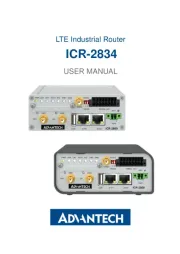
30 Juli 2025
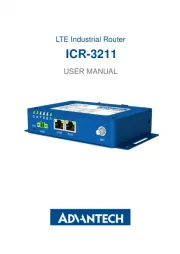
29 Juli 2025
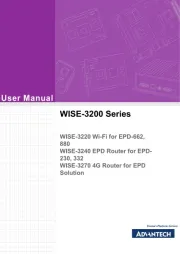
29 Juli 2025
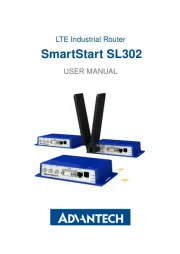
29 Juli 2025
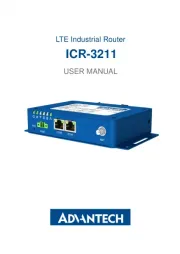
29 Juli 2025
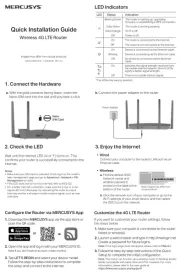
28 Juli 2025
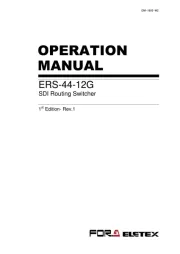
15 Juli 2025
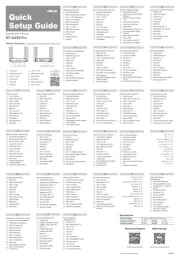
14 Juli 2025
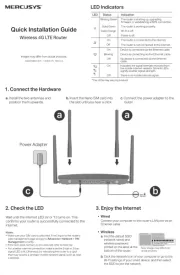
7 Juli 2025
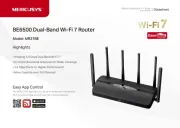
7 Juli 2025